Animals, laboratory raw materials
In the beauty salon and in the war
For a long time, experiments have been carried out with animals. In 1859, Darwin published a scientific method to learn human physiology with animals. Since then, trials have been very sophisticated (in most cases). As science advances, the number of animals used has increased. Currently, a 12-minute animal is used in the European Union, in Japan for two minutes and in the United States for one per minute. The United Kingdom is the country that uses the most research animals in the European Union, followed by France and Germany.

Although different types of animals are used in the research, the stars of the laboratories are rodents, especially mice and rats. The use of these animals is mainly due to their rapid reproduction and the possibility of visualizing the short-term processes. In addition, being mammals, his organism has remarkable similarities with the human organism. Other mammals are used by resemblance.
However, research is also carried out with animals that are not mammals, and in recent years the number of cold blood species has increased in the laboratories of several municipalities. As research has been developed, many of these animals have specialized in growing for certain purposes. It is normal, moreover, that the same animal is used to carry out several experiments.
Diverse objectives and pathways
But, what objectives are they pursuing experiments with these animals? They can be very different, from the measure of the toxicity of an industrial use topic to the creation of a new cancer therapy.


Therefore, totally different experiments can be carried out depending on the final objective. In the corrosivity tests of the products, for example, the product is usually placed on the back of rabbits with anesthesia. In the case of attempts to obtain new vaccines, they study the immune systems of animals and see how they respond to the substance they want to test. For this purpose, the virus is subjected to and tests are made of the necessary doses and their characteristics.
When working with other diseases, animals are affected and treatments are applied to them. Many times they undergo different conditions or stimuli to identify all the variables that can be relevant. For the follow-up of the entire process, it is normal to incorporate follow-up tools into the bodies of animals, especially in neurological investigations.
It is increasingly common for animals to genetically change to obtain the most suitable conditions for experiments. Advances in genome have contributed to this in recent years.
With the passage of the years, it was necessary to regulate the work with animals in the laboratories. The British were the pioneers in regulating this matter. In 1876, with the approval of the UK's Anti-Animal Cruelty Act, an experimental protocol was agreed and a licensing system was established which is currently used in many places. In the Spanish State, licence is also required, indicating in the application the experiments to be carried out, the animals to be used, and the procedures and objectives to be carried out. In most of the municipalities with a licence system, in addition, they have protocols of tenure and management of animals in the laboratories.
In addition to the way animals are used, standards have been established for the acceptance of achievements. In the UK, for example, any new drugs should be tested at least on two mammals and one of them should be a large mammal, not a rodent. In the case of new vaccines, for the vaccine to be considered effective, 80% of vaccinated animals must survive after being exposed to a disease.
On the other hand, the LD50 system (lethal dose 50%) was used to measure the toxicity of a product or the risk of a drug. According to this system, we had to test with 200 animals to calculate the dose that would die half a group. The current protocol establishes that the death of 10% of the animals used is sufficient to establish the toxicity of the product, since the measures have been hardened much. On the other hand, with the aim of reducing the use of animals, statistical methods have been developed to extrapolate data. In many places, if a substance kills the first three animals, no further evidence is needed.

In addition, when a discovery is made, the last step prior to enlargement is to test in another laboratory to ensure the same results. Then will come the human use attempts of the product.
For the benefit of human beingsMany have been the advances in the fight against human diseases thanks to experiments with animals. They have been developed through the use of various techniques and animal treatments currently common. This is the case of anesthesia.
In 1885, after investigating infectious diseases with animals, Pasteur made a vaccine against cholera and rabies. This is only the beginning of a long list, since other vaccines have been obtained such as polo, rubella, tuberculosis, sarampiana, seeds, etc.
The most important vaccines currently being investigated are also being tested or tested with animals. They did so in Africa, for example, with the Ebola vaccine that is now being tested in humans.
On the other hand, interventions in animals were of great help to develop techniques of organ transplantation and cardiac surgery. Antibiotics and treatments against diabetes and cancer depend a lot on animal testing.
However, although the results of many animal research generate great expectations, sometimes the differences between animals and humans are too big. For many scientists, these differences can be balanced in experiments, but on several occasions, a treatment with spectacular results in animals has not had the same influence on humans.
On the other hand, various products and drugs have been tested and marketed in humans after tests carried out in animals and, in the long term, problems that did not appear in animals have been detected. Thalidomide was the case of the drug, for example. This drug was used to combat the dizziness of pregnancy between 1955 and 1967, causing serious malformations in thousands of children.
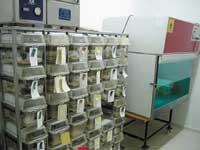
The opposite has also occurred, and some products that did not affect animals or cause problems are very important to humans. Digoxin, for example, caused serious damage to animals, but is a basic medicine to treat heart disease. In addition, different responses can be obtained between species and if the tests are not performed with the proper species, many resources can be lost.
Problems of various levelsTo these problems we must add the ethical debate that involves the suffering and death of animals. Research with animals has generated such concerns for a long time. For example, researchers Russel and Burch published in 1959 standards to reduce the number and suffering of animals and improve the quality of trials.
In this regard, the European Parliament adopted the decision to reduce the use of animals by 50% by 2000, but this decision has not been met. Since the Member States committed to optimizing the methods, they have made measurements, and although the number of animals used between 1996 and 1999 declined, by 2002 it increased again.
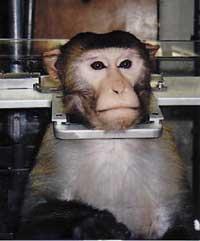
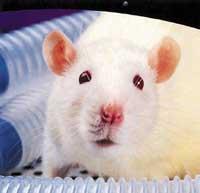
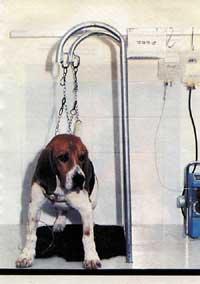
On the other hand, the European Union and other institutions committed to investing in alternative methods. However, according to animal protection associations, this commitment is not complied with either the standards of Russel and Burch. Some of these associations require compliance with the legislation or, in some cases, compliance with the current legislation.
On the contrary, other groups intend to completely ban the experimental use of animals. Some bet hard for it and against the laboratories and researchers conducting experiments. In the UK, for example, many scientists are threatened and attacks against laboratories are frequent. As a result, they invest a lot of money in security and these expenses have caused the paralysis of several projects. This is the case of the largest primates laboratory in Europe to be built in England.
Another concern in this area is the existing economic interests. In the United States alone, more than 18 billion dollars were invested last year. Some researchers believe that research is slowed down by these economic interests. In fact, pharmaceutical industries and other industries in the environment, such as those selling laboratory animals, may be interested in prolonging the experiments.
On the other hand, many believe that experiments can be reduced and results optimized, since research is repeated in different places due to lack of communication and economic competition. Consequently, the resources available for other issues are lost. Many discoveries are not made available to the scientific community and private laboratories keep them for a long time, although they serve to develop other research.
In order to deal with all this, various non-governmental and official organizations have requested that the data obtained in different countries and private companies be shared so that the work is not repeated, the achievements become operational as soon as possible and resources are not lost. In addition, they highlighted the need to coordinate international programs to test alternative systems.
Despite the problems, experiments with animals occupy an important place in research and, according to scientists, alternative techniques are not yet sufficiently developed. Therefore, it seems that many of the advances to be made in science will continue to be a consequence of these experiments.

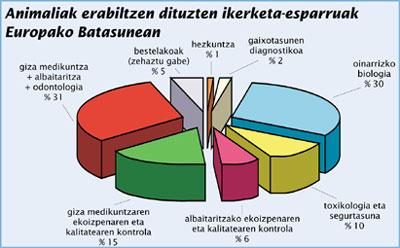
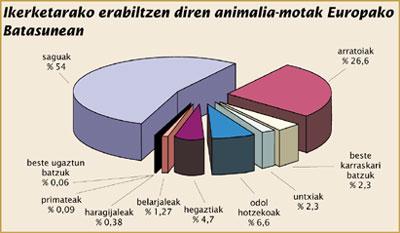
Different industries use animals to investigate their products. Some are more controversial than others. In the cosmetics industry laboratories, for example, the use of animals is very common and there have been strong controversies worldwide. In 2002, the European Union passed a regulation prohibiting animal testing of components and finished products for the manufacture of cosmetics.
Although the debate began more than 15 years ago, it is spreading. In 1996, cosmetic experiments were carried out in eight member states, and in 1999 they were carried out in four, representing 0.4% of the total experiments with animals.
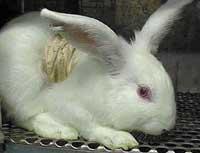
However, some points of the ban have not yet entered into force. One of the most controversial is the prohibition to commercialize new products tested in animals. In many countries outside the EU still hold such sessions and the ban may have problems with the rules of the World Trade Organization. In addition, in the main cosmetics companies have not made the decision with good eyes, since it will cause them great economic losses and have no alternative methods. Other companies have begun to show in propaganda that their products are not tested with animals.
Although more unknown, another area that generates debate is that of military investigations. There are many people who use animals to experiment with war, despite the difficulty of having data on them. With animals, studies of impact of conventional weapons, pain studies, chemical warfare tests, measurements of effects of radiations, etc.
On the other hand, in military investigations a lot is worked with viruses, many of which are transformed into laboratories. For this reason, many of the results against diseases come from the researchers of the armies. However, many organizations consider that many other results remain secret and cannot be used in the civil world.





